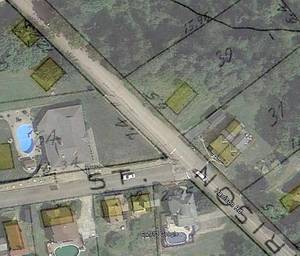My fourth great-grandparents, John and Margaret Stewart, were two of the first settlers in what would eventually become Buffington Township, Indiana County, Pennsylvania. John Stewart married Margaret McFarland in 1788 and by 1796 they had a son, my third great-grandfather, James Stewart.
I describe here how I used records available at the Pennsylvania Historical and Museum Commission (PHMC)1 and Google Earth to pinpoint the location of the original Stewart homestead.
Footnotes- Pennsylvania, “Copied Surveys, 1681-1912,” database and digital images, Pennsylvania State Archives, Land Records (http://www.portal.state.pa.us/portal/server.pt/community/state_archives/2887 : downloaded 9 December 2009), RG-17, Series #17.114, Copied Survey Book C-206, Page 221 and reverse, John Stewart, http://www.phmc.state.pa.us/bah/dam/rg/di/r17-114CopiedSurveyBooks/Books%20C1-C234/Book%20C206/Book%20C-206%20pg%20441.pdf; Pennsylvania Historical and Museum Commission, Bureau of Archives and History.

 In a
In a